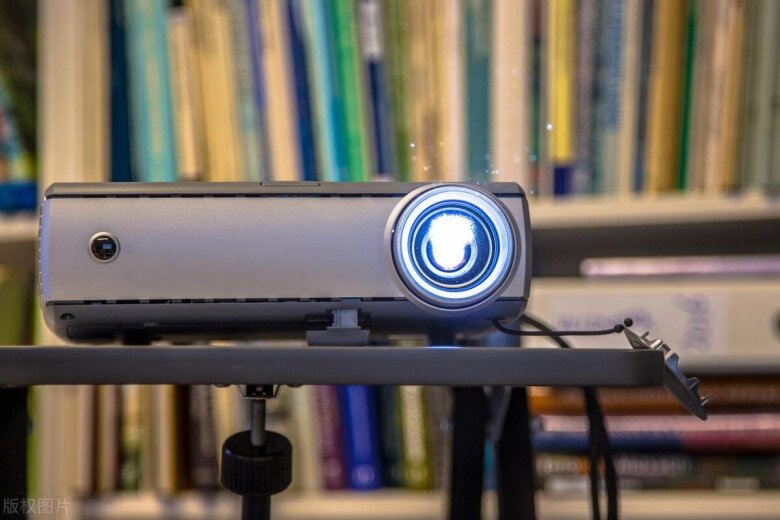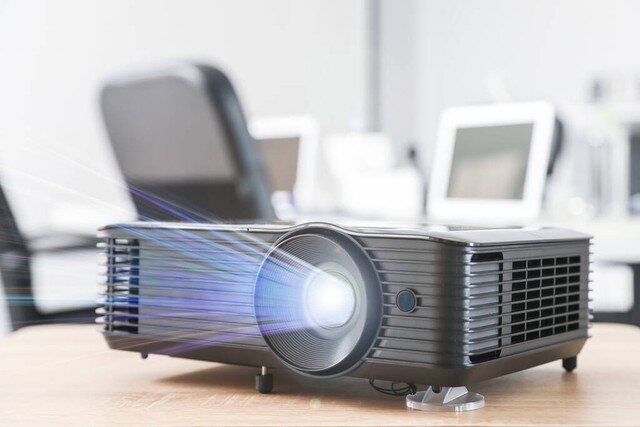Projectors have become increasingly popular thanks to technological advancements, offering crisp image quality, high brightness, and affordability. Modern projectors are compact, portable, and versatile, allowing connections to various devices such as computers, phones, or gaming consoles.
Beyond their traditional use in offices and schools, projectors are also gaining traction in home entertainment, delivering impressive viewing experiences with large and flexible images. Their portability and versatility make them a popular choice for diverse needs, with many families opting for projectors instead of televisions.

I also chose to set up a projector at home instead of buying a TV, but I wasn’t sure how to make the right choice. It took me three tries to figure out that there are eight rules to follow when purchasing a projector:
1. Opt for a projector with a 1080p resolution
When selecting a resolution, consider choosing 1080p, which is the most common standard and meets most users’ needs. If your budget allows, you can explore 4K projectors for even sharper images.
However, it’s worth noting that finding a quality 4K projector under $10 million VND is challenging. Therefore, a 1080p projector is more than sufficient within this price range.
2. Choose a projector with a 0.47DMD chip size
For 1080p resolution, the ideal chip size is 0.47DMD. If you come across a 4K projector with the same chip size, it may be using a shaking technique to achieve the higher resolution, but this won’t affect your viewing experience.
On the other hand, avoid projectors with a 1080p resolution paired with a 0.23DMD or 0.33DMD chip, as they won’t perform optimally.

3. Pay attention to brightness
Lumens are the standard measure of light intensity for projectors, and there are three types: ANSI lumens, CVIA lumens, and ISO lumens. For the best image quality, look for a projector with ANSI lumens above 3000, CVIA lumens above 1800, and ISO lumens above 2500.
4. Avoid single-panel LCD technology
Among the available display technologies, DLP (Digital Light Processing) is the top choice due to its high contrast ratio and vibrant colors. Alternatively, you can consider 3LCD (three-panel LCD), although it tends to be more expensive.
The advantage of 3LCD is its ability to reproduce natural colors and provide excellent brightness. On the other hand, single-panel LCD technology is not recommended.
5. Avoid side projection
There are two projection methods: front projection and side projection. Front projection is recommended as it delivers more stable and clearer images, and makes alignment more accurate since the projector faces the screen directly.
Side projection can affect image accuracy and brightness. Additionally, aim for a projection ratio between 1.2:1 and 1.3:1 for optimal results.

6. Choose a projector with Dolby Audio technology
When selecting audio equipment for your projector, prioritize those with Dolby Audio technology, a renowned surround sound technology that enhances audio realism. Avoid HiFi stereo equipment, as it cannot match the cinematic audio experience provided by Dolby Audio.
7. Opt for laser-based projectors
Consider projectors that use LED or laser technology. While they produce similar image effects, laser projectors tend to deliver sharper images during the day. Traditional bulb-based projectors require periodic replacements and may degrade in image quality over time.
Laser projectors provide continuous lighting and superior color accuracy.

8. Choose a projector with automatic trapezoidal correction
Look for a projector with automatic trapezoidal correction, which adjusts trapezoidal distortions for more geometrically accurate images. Avoid projectors with only vertical correction, as they limit adjustments to up and down movements, making usage more complicated and less effective.




































